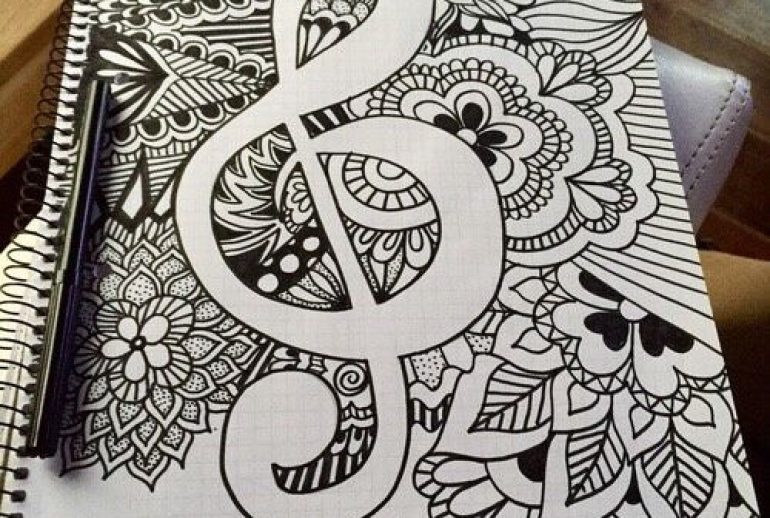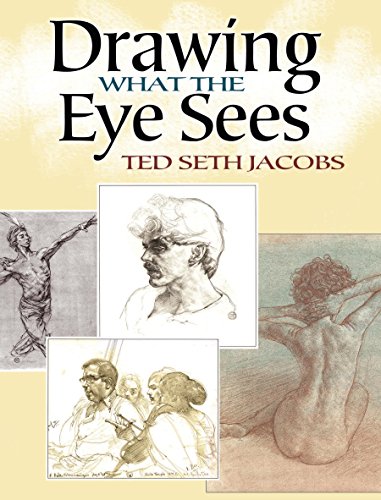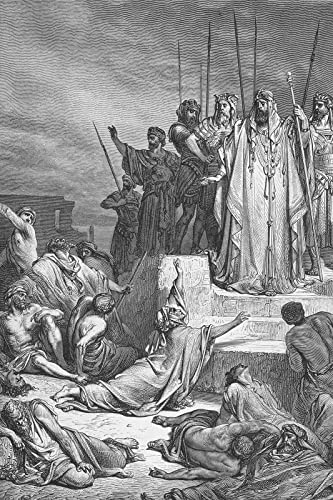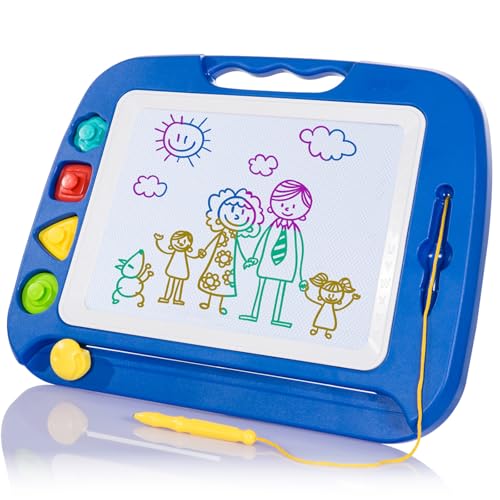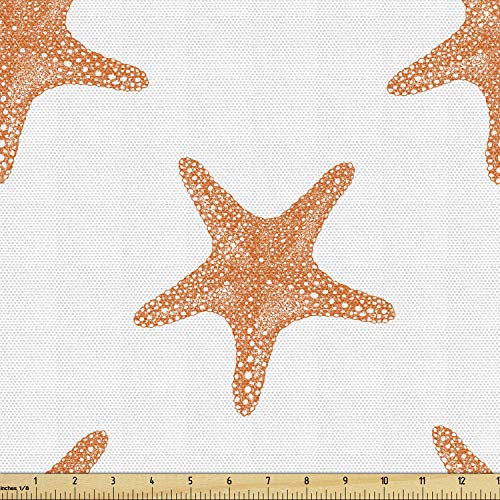Pencil drawing offers endless creativity. You can create stunning designs with just a pencil and paper.
Exploring new ideas for pencil drawing can keep your art fresh and exciting. Whether you are a beginner or an experienced artist, trying out different design ideas can help improve your skills. Pencil drawing is versatile and allows for detailed work, shading, and texture.
The simplicity of this medium makes it perfect for capturing intricate details and expressing creativity. In this blog post, we will explore various pencil drawing design ideas to inspire your next masterpiece. From realistic portraits to abstract designs, there is something for everyone. Let your imagination run wild and discover new ways to bring your drawings to life.
Introduction To Pencil Drawing
Pencil drawing is a beautiful form of art that uses simple tools. It is both accessible and versatile, making it ideal for beginners and professionals. This art form involves creating images on paper using a pencil. Artists can achieve various textures and shades. From quick sketches to detailed portraits, pencil drawing offers endless possibilities.
Benefits Of Pencil Drawing
Pencil drawing has numerous benefits:
- Cost-Effective: Basic supplies are affordable. A pencil and paper are all you need.
- Portable: You can draw anywhere. No need for a studio.
- Improves Focus: Drawing sharpens attention to detail. It enhances concentration.
- Boosts Creativity: Experiment with different techniques. Develop your unique style.
Essential Tools
To start pencil drawing, you need the right tools. Here’s a list of essential supplies:
| Tool | Description |
|---|---|
| Pencils | Different grades like H, B, and HB. Each offers varied hardness and darkness. |
| Paper | Choose smooth or textured paper. Each type affects the drawing style. |
| Erasers | Use different erasers for cleaning and detailing. Kneaded erasers are flexible. |
| Blending Stumps | Blend pencil marks smoothly. Create soft transitions and shading. |
| Sharpener | Keep pencils sharp for detailed work. Use a good quality sharpener. |
Armed with these tools, you are ready to start your pencil drawing journey. Enjoy the process and watch your skills grow.
Basic Techniques
Mastering pencil drawing begins with understanding the basic techniques. These core skills will enhance your artistic ability and bring your sketches to life. Let’s explore some fundamental techniques that every beginner should know.
Shading And Blending
Shading adds depth and realism to your drawings. It involves varying the pressure on your pencil to create light and dark areas. To practice, draw a simple shape like a sphere. Shade one side darker while keeping the other side lighter. This simulates light falling on the object.
Blending smooths out the shading. You can use tools like blending stumps or tissue paper. Gently rub the shaded areas to create a seamless transition between light and dark. This technique gives your drawing a more polished look.
| Tools for Shading | Tools for Blending |
|---|---|
| Graphite Pencils (HB, 2B, 4B, 6B) | Blending Stump |
| Charcoal Pencils | Tissue Paper |
| Colored Pencils | Q-tip |
Creating Textures
Textures make your drawings more interesting and realistic. Different textures can be created using various techniques. Here are a few methods:
- Cross-hatching: Draw intersecting lines to create a textured effect. This is useful for depicting rough surfaces.
- Stippling: Use small dots to build up texture. This technique is great for creating intricate details.
- Scribbling: Random, overlapping lines create a chaotic texture. This works well for depicting fur or foliage.
Combine these techniques to achieve unique textures. Practice regularly to improve your skills.
Inspiration Sources
Finding the right inspiration for your pencil drawings can be challenging. But, the world around you is full of creative ideas. From the beauty of nature to the simplicity of everyday objects, there are countless sources to spark your imagination. Below, we explore some of the best inspiration sources for pencil drawing design ideas.
Nature And Landscapes
Nature offers a rich source of inspiration for pencil drawings. The intricate details of leaves, the texture of bark, and the varying shapes of flowers can provide endless ideas. Consider taking a walk in a park or a forest to observe the beauty around you.
- Trees and Leaves: Capture the detailed patterns of tree bark or the delicate lines of leaves.
- Mountains and Hills: Sketch the majestic peaks and rolling hills for a serene landscape.
- Water Bodies: Rivers, lakes, and oceans offer dynamic scenes with flowing water and reflections.
Everyday Objects
Everyday objects can be just as inspiring as the vast landscapes. Look around your home or workspace. You will find countless items to draw. From simple household items to more complex mechanical objects, these can all serve as great subjects.
- Kitchenware: Draw pots, pans, and utensils for practice with shapes and reflections.
- Furniture: Sketch chairs, tables, and lamps to improve your understanding of structure and perspective.
- Books and Stationery: Capture the details of books, pencils, and notebooks for a still life drawing.
Inspiration is everywhere. Sometimes, you only need to look a little closer.

Creative Exercises
Engaging in creative exercises can enhance your pencil drawing skills. These exercises help in developing your technique and stimulating your imagination. They are also fun and can be done anywhere. Explore the following creative exercises to bring out the artist within you.
Quick Sketches
Quick sketches are an excellent way to practice. They involve drawing something within a short time. This helps in developing speed and accuracy. You can start with simple objects such as fruits, cups, or plants. The goal is not to make a perfect drawing but to capture the essence quickly.
Here are some ideas for quick sketches:
- Sketch people at a cafe or park.
- Draw your pet in various poses.
- Capture the view from your window.
For added fun, set a timer for 5 to 10 minutes. This will push you to draw faster. Over time, you will notice improvement in your line work and confidence.
Drawing From Memory
Drawing from memory is a fantastic exercise. It challenges your recall and imagination. Start by observing an object or scene for a few minutes. Then, put it away and try to draw it from memory. Do not worry about getting every detail right. Focus on the overall shape and key features.
Here are some steps to follow:
- Look at the object for 2 minutes.
- Close your eyes and visualize it.
- Draw it without looking at the object.
Repeat this exercise with different objects every day. This will improve your visual memory and creativity. It also makes your drawings more personal and unique.
Exploring Styles
Pencil drawing offers endless possibilities. Exploring various styles can help you find your unique voice. Whether you prefer detailed realism or imaginative abstract art, there is something for everyone. Let’s dive into some popular pencil drawing styles.
Realism
Realism is all about capturing life-like details. This style focuses on replicating the real world. Every shadow, texture, and light source is considered. Realistic drawings often require a keen eye and patience.
Here are some tips for improving your realism skills:
- Study anatomy: Understand human and animal anatomy for accurate depictions.
- Observe light and shadow: Notice how light interacts with objects.
- Practice textures: Experiment with different textures like skin, fur, and fabric.
Realism can be challenging, but the results are rewarding. Keep practicing and refining your techniques.
Abstract
Abstract art allows for freedom and expression. This style is less about accuracy and more about emotion and imagination. Abstract drawings can be simple or complex, using shapes, lines, and patterns to convey meaning.
To explore abstract drawing, try these ideas:
- Experiment with shapes: Use geometric or organic shapes to create interesting compositions.
- Play with patterns: Incorporate repetitive patterns for visual interest.
- Mix styles: Combine elements of realism with abstract to create unique pieces.
Abstract art lets you break the rules. It encourages creativity and personal expression. There are no limits, just endless possibilities.
Advanced Techniques
Once you have mastered the basics of pencil drawing, it is time to explore advanced techniques. These techniques can elevate your drawings, adding a professional touch. Let’s dive into some of the most effective advanced techniques.
Layering And Depth
Layering adds complexity and realism to your drawings. Start with a light sketch. Gradually build up layers using different pencil grades. This approach helps in achieving smooth transitions and rich textures.
Depth is crucial for realistic drawings. Use lighter shades for background elements. Apply darker shades for foreground objects. This creates a three-dimensional effect. Overlapping objects also add to the sense of depth.
| Pencil Grade | Usage |
|---|---|
| 2H | Light initial sketches |
| HB | General shading |
| 2B | Darker details |
| 4B | Deep shadows |
Light And Shadow
Light and shadow bring life to your drawings. They create contrast and highlight details. First, determine your light source. Consistency is key.
Use a range of pencils to represent different light intensities. Light areas should use harder pencils. Dark areas should use softer pencils. Blend the transitions smoothly. Avoid harsh lines between light and shadow.
Here are some tips to master light and shadow:
- Identify the light direction.
- Use a light touch for highlights.
- Apply pressure for darker areas.
- Blend using a blending stump or tissue.
Practicing these techniques will significantly improve your pencil drawings. They add realism and depth, making your artwork stand out.
Project Ideas
Pencil drawing opens a world of creative possibilities. From sketching lifelike portraits to capturing the beauty of everyday objects, there are endless project ideas to explore. Below are some engaging project ideas to inspire your next pencil drawing.
Portraits
Portrait drawing is a popular choice for artists. Start by sketching a family member or a friend. Focus on capturing their unique facial features. Pay attention to the eyes, nose, and mouth. These details bring the portrait to life. Experiment with different shading techniques. This adds depth and dimension to your drawing. Practice regularly to improve your skills. Over time, you will see significant progress.
Still Life
Still life drawings are another excellent project idea. Begin with simple objects like fruits or flowers. Arrange them in an interesting composition. Use a single light source to create shadows. This helps in understanding light and shadow. Gradually, move on to more complex objects. Include items with different textures and shapes. This challenges your observation skills. Remember to take your time. Patience is key to mastering still life drawing.
Final Touches
Final touches in pencil drawing can elevate your artwork. They add depth and realism. This stage is crucial for a polished look. Ensuring your drawing stands out and captures attention.
Detailing Tips
Focus on the small elements. These make a big difference. Use a fine pencil for intricate lines. Pay attention to shadows and highlights. Gradually build up layers for a realistic effect. Don’t rush. Take your time to refine edges and textures. This creates a more lifelike drawing.
Proper Presentation
Presentation is key. It makes your drawing look professional. Use a clean, white mat to frame your work. This helps to focus attention on the drawing. Avoid smudges by handling with care. Store your artwork in a protective sleeve. Display it in a well-lit area. Good lighting enhances the details and shades. Make sure to sign your artwork. This adds a personal touch and authenticity.
Showcasing Your Work
Explore creative pencil drawing design ideas to showcase your work. Highlight intricate details and unique patterns to captivate your audience.
Sharing your pencil drawings with others can be very rewarding. It allows you to receive feedback and connect with other artists. Showcasing your work also helps you build an audience and gain recognition. Here are some effective ways to showcase your pencil drawings.
Social Media Platforms
Social media is a powerful tool for artists. Platforms like Instagram and Facebook are great for sharing your drawings. Use high-quality photos of your artwork. Write engaging captions to tell the story behind each piece. Engage with your followers by responding to comments. Use relevant hashtags to reach a broader audience. Regularly update your profile with new art to keep your followers interested.
Art Exhibitions
Participating in art exhibitions can give your work more exposure. Look for local galleries or community centers that host art shows. Submit your best pieces for consideration. Attend these events to network with other artists and art lovers. Exhibitions provide a platform to sell your work and gain new fans. Keep an eye out for online exhibitions as well. These can be a great way to reach a global audience. “`

Frequently Asked Questions
What Are Some Easy Pencil Drawing Ideas?
Easy pencil drawing ideas include simple shapes, flowers, and basic landscapes. Try drawing everyday objects, animals, or simple portraits. Practice helps improve skills.
How To Improve Pencil Drawing Skills?
To improve pencil drawing skills, practice regularly, study art tutorials, and observe real-life objects. Experiment with shading and different techniques.
What Tools Are Needed For Pencil Drawing?
For pencil drawing, you need pencils of various grades, erasers, a sharpener, and quality paper. Optional tools include blending stumps and rulers.
How To Create Depth In Pencil Drawings?
Create depth in pencil drawings by using shading techniques, varying line weights, and incorporating perspective. Practice helps refine these skills.
Conclusion
Pencil drawing offers endless creative possibilities. Try different techniques and styles. Experiment with shading, textures, and details. Let your imagination guide you. Simple ideas can lead to stunning results. Practice regularly to improve your skills. Enjoy the process and have fun.
Share your art with others. Get inspired and inspire others. Keep drawing and exploring new ideas. Each sketch is a step forward. Happy drawing!

